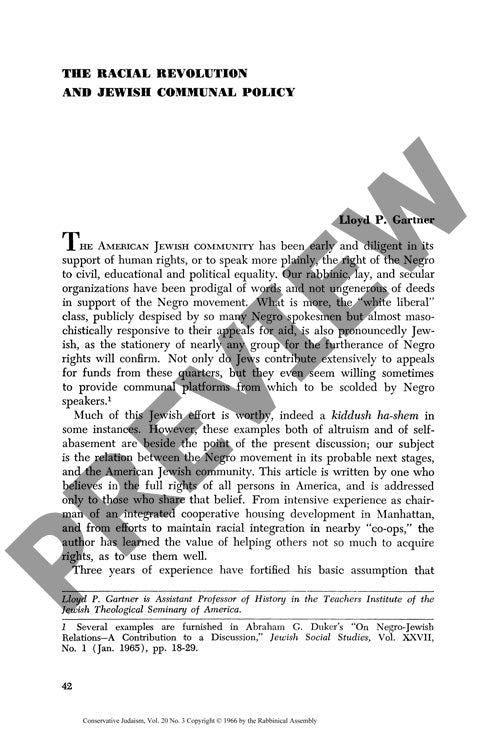The Racial Revolution and Jewish Communa
Couldn't load pickup availability
As racial justice activism evolved from legislative victories to implementation battles in 1960s America, Jewish communal organizations faced a critical turning point in their civil rights involvement. The growing autonomy of Negro leadership and emergence of competing visions for racial progress demanded strategic reassessment of Jewish participation in the movement. Through participant observation of Manhattan housing integration efforts combined with historical analysis of Jewish organizational engagement, this research reveals three potential trajectories for the Negro movement: integration as a distinct ethno-racial group, complete assimilationist integration challenging all ethnic distinctions, or development as a vanguard for broader American radicalism. Extensive Jewish participation in civil rights efforts, while morally significant, intersected with complex economic and political relationships between Jewish and Negro communities in Northern urban areas - from neighborhood transitions to employment patterns and shifting political power dynamics. The findings suggest Jewish communities must transition from direct participation in Negro-led organizations to supportive external relationships, potentially offering expertise in community institution-building while maintaining legitimate self-interests. This delicate balance requires avoiding both excessive self-abnegation and withdrawal from fundamental moral commitments to racial equality.

More Information
-
Physical Description
-
Publication Information
Published 1966
ISBN
-
Publication Credits
Lloyd Gartner

